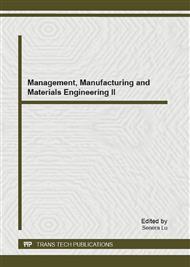p.242
p.247
p.253
p.258
p.265
p.270
p.275
p.280
p.289
Study on the Tensile Strength in X-Cor Sandwich by Using Finite Element Method
Abstract:
In the tensile strength analysis, the failure criterion and materials stiffness degradation rule were proposed and the X-cor sandwich’s failure modes were also clarified. According to the failure criterion we used the elements with stiffness degradation and their distributions in the finite element model to simulate the types and propagation path of the failure and the failure mechanisms of X-cor sandwich were explained. The finite element analysis indicates during the tension firstly the interfaces between resin regions and Z-pin tips fail and the failure mode is Z-pin pull-out from the face-sheets. The finite element simulated results are in good agreement with the experimental results, the error range is -11.6%~9.7%. The comparison results show the failure criterion and stiffness degradation rule are reasonable and this method can be used to predict the X-cor sandwich’s tensile strength.
Info:
Periodical:
Pages:
265-269
Citation:
Online since:
December 2012
Authors:
Keywords:
Price:
Сopyright:
© 2013 Trans Tech Publications Ltd. All Rights Reserved
Share:
Citation:


